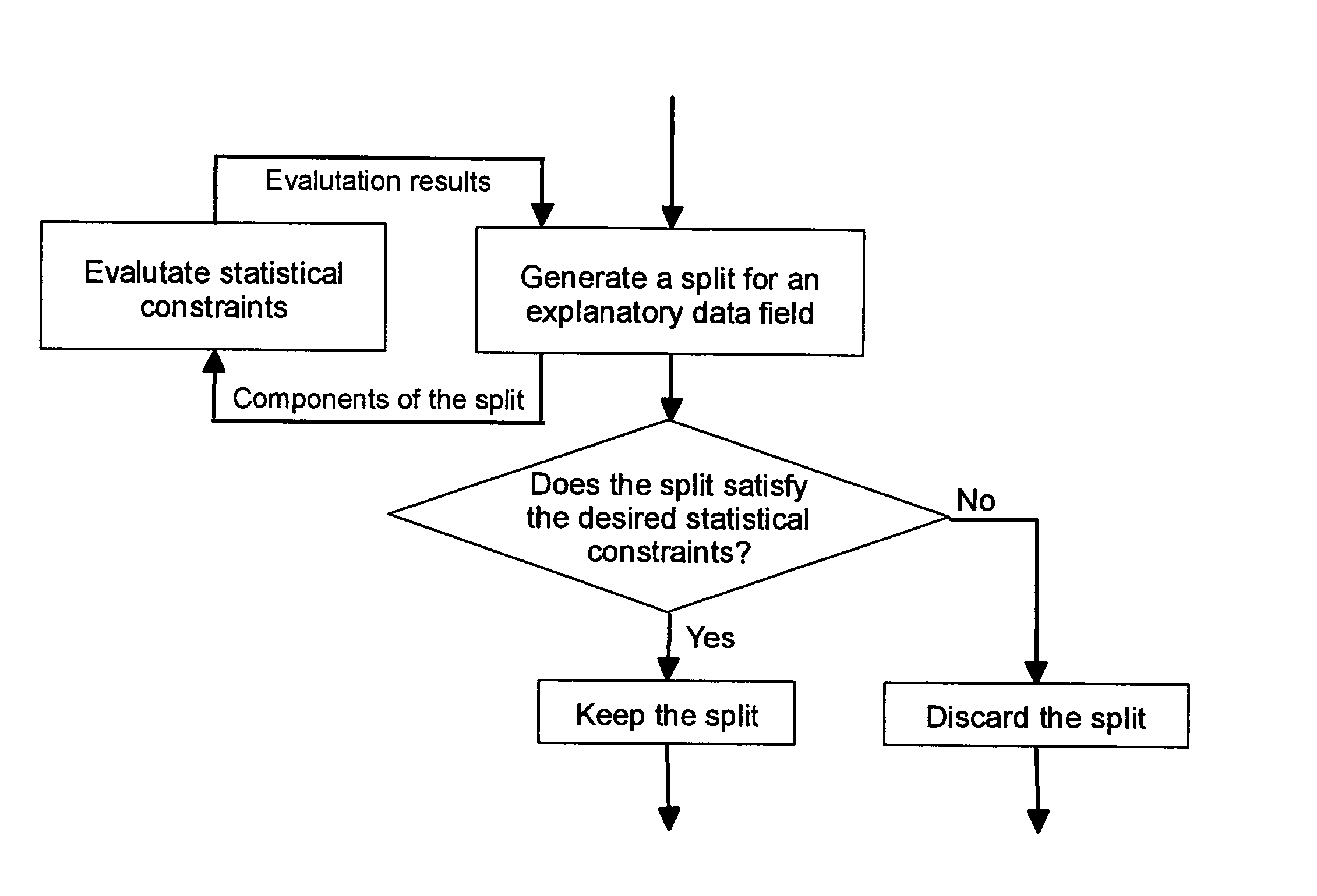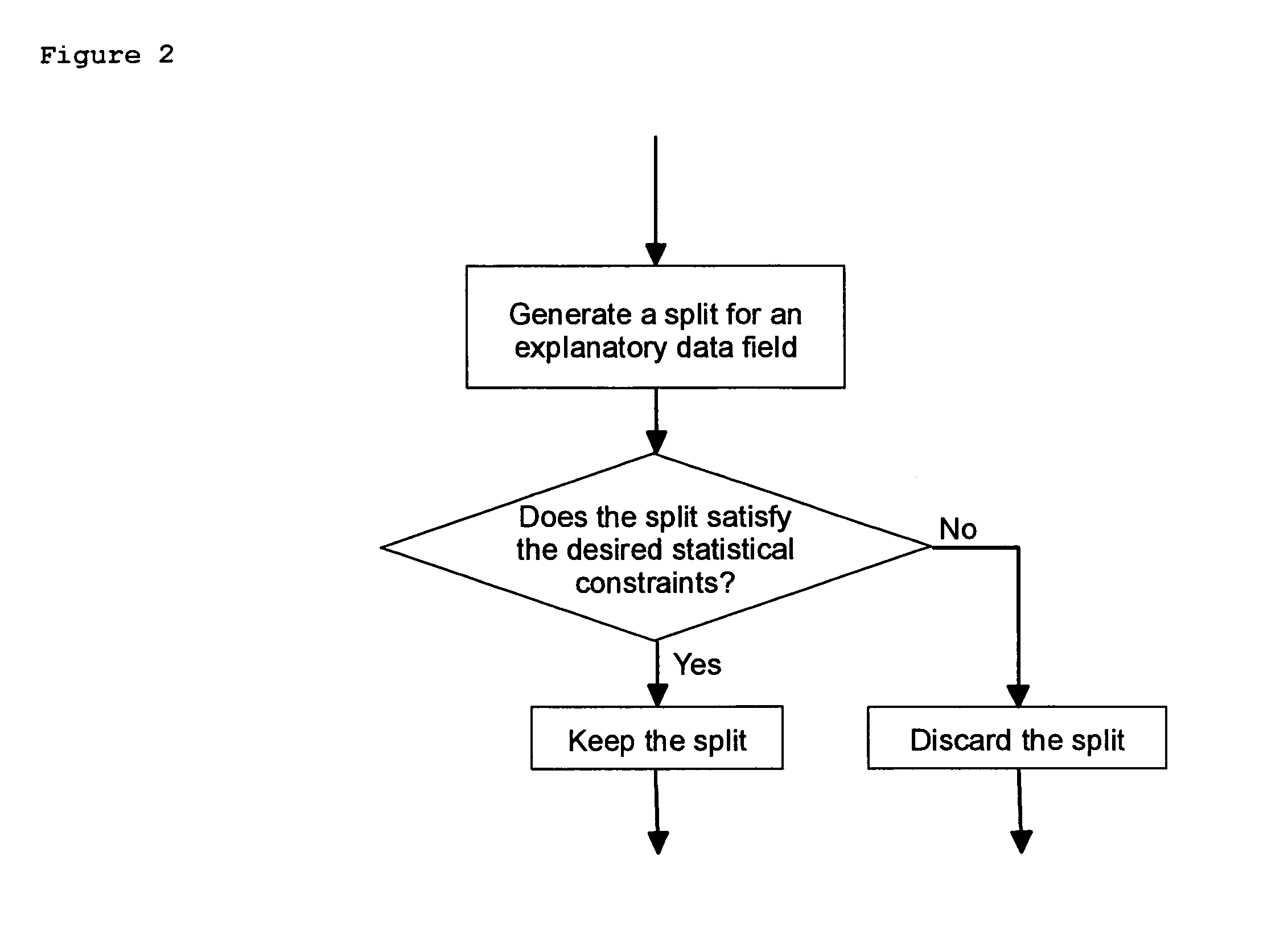Method for constructing segmentation-based predictive models from data that is particularly well-suited for insurance risk or profitability modeling purposes
a segmentation-based, predictive modeling technology, applied in the field of data-based predictive modeling, to achieve the effect of preventing premature termination of the segment refinement process
- Summary
- Abstract
- Description
- Claims
- Application Information
AI Technical Summary
Benefits of technology
Problems solved by technology
Method used
Image
Examples
Embodiment Construction
[0062]As summarized above, the present invention enables segmentation-based models to be constructed wherein the model building process is constrained to only produce segments with desirable statistical characteristics. In particular, for insurance risk modeling purposes, the segments can be constrained to be actuarially credible. A second benefit of the invention is that it can be applied in conjunction with any of the various statistical models employed by actuaries in order to construct highly predictive risk models that take into account the statistical properties of insurance data associated with specific insurance products.
[0063]It is important to point out that the invention is widely applicable and its use is in no way restricted to insurance risk modeling. Insurance risk modeling is merely an illustrative example that clearly demonstrates the utility of incorporating statistical constraints into the model building process. Insurance risk modeling will thus be used as the ru...
PUM
 Login to View More
Login to View More Abstract
Description
Claims
Application Information
 Login to View More
Login to View More - R&D
- Intellectual Property
- Life Sciences
- Materials
- Tech Scout
- Unparalleled Data Quality
- Higher Quality Content
- 60% Fewer Hallucinations
Browse by: Latest US Patents, China's latest patents, Technical Efficacy Thesaurus, Application Domain, Technology Topic, Popular Technical Reports.
© 2025 PatSnap. All rights reserved.Legal|Privacy policy|Modern Slavery Act Transparency Statement|Sitemap|About US| Contact US: help@patsnap.com



